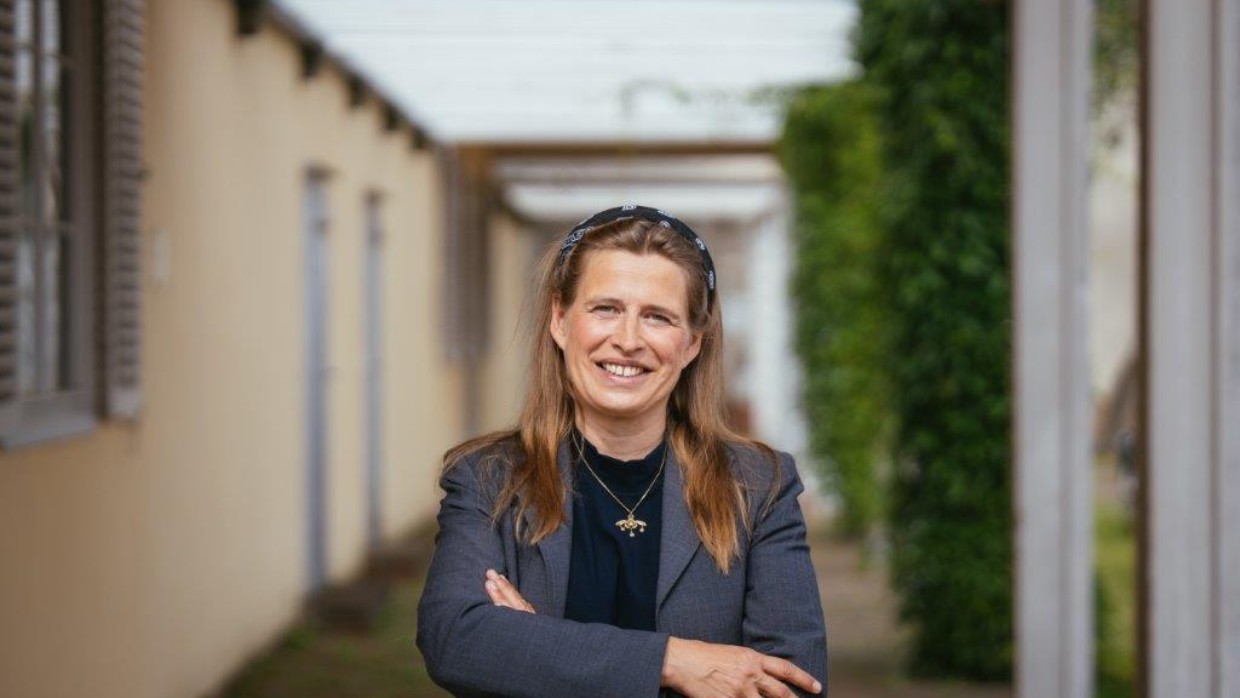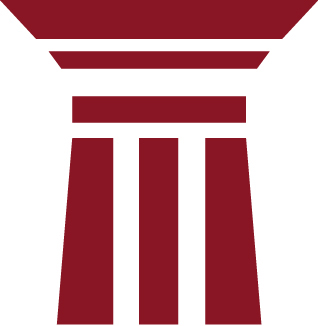News
News
From Museum Restoration to Witch Hunts - The Work of Friederike Koch-Heinrichs
She has been chairwoman of the Saxon Museum Association since last year and has been director of the Museum der Westlausitz in Kamenz for 24 years. A conversation with Friederike Koch-Heinrichs about the challenges facing museums in rural areas, realized visions and pitfalls in the renovation of museum buildings, cultural funding in times of tight budgets and educational gaps in the history of witch-hunting. Of course, MUTEC was also a topic of conversation - a trade fair that Ms. Koch-Heinrichs has been attending for a long time. After all, MUTEC has traditionally worked closely with museum associations.
Ms. Koch-Heinrichs, we are here at the Museum der Westlausitz in Kamenz. What is there to see here?
The Museum der Westlausitz is a classic regional museum. We take an interdisciplinary approach to the relationship between human and nature in three specialist areas: archaeology, zoology and geology. From these different sciences, we try to take a look at the region and embed it supra-regionally. That is our main task. We then present our findings in the building and now also go beyond this and present the methods we use to arrive at our results. In a very spontaneous idea, a room was created within a week in which we present the methods of archaeological research based on investigations in the West Lusatia region.
This also gives a very impressive impression of the profession of archaeologist, which is somehow a dream job for children.
In any case. It goes without saying that we want to convey the passion of our sciences here. Especially in times of skills shortages. That's why we also take on all student interns, because they have to get a taste of scientific fields somewhere. We therefore endeavor to make our contribution.
The Museum der Westlausitz is located in a rural area. What are the challenges and opportunities here?
We deal specifically with rural areas. Upper Lusatia is the museum's field of research. Through our work, we present a business card for the region, so to speak. Of course, it is not always easy financially. However, we are sponsored by the County of Bautzen, which attaches great importance to supporting our educational mission. We have a broad educational program for all age groups and have undertaken many initiatives in recent years to combine the practical relevance of our museum with STEM subjects. For example, when we look at the Stone Age and shooting with a bow and arrow, this can be combined with the physics of movement and mathematical calculations can be made with the children. We also see ourselves as a museum that creates experiences and thus enables hands-on learning. In many areas, our exhibitions enable interactive engagement in the communication of our topics, such as via the earthquake simulator or our archaeological training room. Our workhouse on the outskirts of the city is also designed as a foam warehouse to make scientific work transparent, where researchers, restorers and preparators can look over the shoulder. With our sponsor, we have a stable partner at our side for such projects.
Last year, you were elected Chairwoman of the Saxon Museum Association. Congratulations once again. At your members' meeting and annual conference from March 29 to 31 this year, one of the topics will be the conversion and renovation of museums. What challenges do your members face and what will they bring to the conference?
It is not without reason that we have entitled the conference “Realized Visions”. The realization of a renovation project is often existential for a museum. Sometimes it is the only way to save a traditional museum or the only chance to think into the future for the next 20 or 30 years; after all, the refurbishment defines the development of a museum for the coming decades. Especially for such an elementary project, you can hardly draw on your own experience. Naturally, major refurbishments are one-off events in a museum director's life. I myself managed the renovation here in Kamenz as a very young museum director, so I have some experience. But that was 24 years ago, and such a project would look very different today. Colleagues need help and support for something like this. At the conference, we want to convey the basics and present practical examples. We have deliberately not called it “best practice”, but want to address pitfalls and difficulties in particular. The project path from the feasibility study to the financing and implementation of such a project is central to this.
What categories are considered in a renovation today, where you might also say that this was not the case for me 24 years ago as a young museum director?
Parts that are standard today, such as interactive exhibitions and aspects of mediation, were already part of our thinking back then. However, many things were only incorporated during the implementation process. It is better to include the needs of an interactive exhibition in the construction planning from the outset. Digitalization plays a role. Visitors expect that today. There must be opportunities for in-depth exploration, for example via a cloud. Social media must be considered in order to improve opportunities for participation.
Is there a trade fair where you can get good inspiration [laughs]?
[laughs as well] Yes, I can imagine that you are referring to MUTEC. I actually went to MUTEC for the first time in 1998, back then in Munich, and it remained an important annual event for me. I'm not at all upset that it's now in Leipzig and always try to plan a visit if possible. After all, it's also a good opportunity to meet up with colleagues from different fields. Since we were just talking about construction projects - if we take the entire museum sector with exhibitions, collections and research areas, there are specialist partners for all areas, whether it's exhibition construction, archiving or 3D printing. Basically, everything you need in terms of specialization is represented. Development in all areas is so incredibly fast and MUTEC is a good opportunity to keep pace. That's why the SMB always combines MUTEC with its annual training conference.
Does it work well if there is a training course going on and the trade fair is next door? One could assume that people would prefer to be distracted and no longer want to educate themselves?
In fact, it is always very important to our participants that they have enough time for the trade fair. Recently, we have always been able to arrange a special tour in which we select stands on a specific topic. We also usually finish at 4 p.m., which leaves us two hours to walk around the trade fair ourselves. And if you want to see even more of MUTEC, you simply have to come on the second day.
Back to your museum. The exhibition on the Dubringer Moor can be viewed here until April 27. This is where art meets nature. What's it all about?
The Dubringer Moor is important for all our disciplines, but especially for zoology and botany. In this exhibition, the artists' circle “Kreis 07” has arranged a plein air in the Dubringer Moor in 2021. The artists have allowed nature to take effect on them and have artistically reworked the moor in photographs, paintings and sculptures and revived it here in the exhibition. The results of this artistic exploration were shown in an exhibition at the Knappenrode energy factory. I was allowed to give the laudatory speech at the time and was totally enthusiastic. I noticed that the artists themselves were not yet finished and wanted to continue working. We then continued the process with seven artists who organized further visits to the moor. This resulted in the current exhibition.
What can be seen here after April 27, 2025?
On May 16, 2025, we will open our next major event with the exhibition “800 Years of Superstition and Magic”. The town of Kamenz will be 800 years old this year. The exhibition and accompanying volume are our birthday present, so to speak. Over the past two years, we have worked intensively with many colleagues on an interdisciplinary basis and looked at the topic from the perspective of folklore, art history, archaeology and historical research. This has enabled us to gather a lot of information on folk beliefs, witch hunts, alchemy and healing magic from Saxony and Upper Lusatia. The chronological focus is on the 15th to 17th centuries, but we try to trace the phenomenon of folk beliefs from the end of the Middle Ages to the early modern period.
A topic where I immediately realized that education is needed. In our preliminary discussion, I said that the witch hunts were an anti-feminist, highly lethal campaign and you were able to correct me immediately.
This is exactly what we have also found out in our research projects. Our current image of witches is an over-imprint based on the critical debate of the last 200 years about the witch hunts of the 16th and 17th centuries. The myth of the young woman with healing powers and the old healer on the margins of society, who were unjustly accused and burned, does not correspond to historical reality. We were able to identify 24 trials in Upper Lusatia and around half of them involved men. In Germany as a whole, a third of those murdered were men. In Iceland, 90 percent of the victims were men! There are also regions where it was mainly children who were executed. So, it's very, very different and what is anchored in our social memory doesn't have much to do with historical reality.
To conclude - what expectations do you have of political decision-makers with regard to cultural funding in times when there are strong disputes about what money is spent on?
It goes without saying that in difficult times, art and culture must also make a contribution and take a critical look at expenditure. However, it is important to do this with a sense of proportion and not to destroy structures that have been built up over the last few decades with a great deal of commitment and corresponding financial resources. We already have an investment backlog in Saxony's museums. We need to think about the future and not sacrifice infrastructure to tight budgets. On the contrary, we should do everything we can to create sustainable structures for our cultural institutions.
As chairwoman of the Saxon Museum Association, you are now in a position to formulate such demands to politicians. Do they listen to you?
We closely communicate with the Saxon State Ministry for Science and Culture and always found open doors for our concerns. Right now the Law on Culture Area is being evaluated. Especially in rural areas this law is the most important basis for preserving the cultural infrastructure. Often it is the only funding possibility and the core funding for those cultural institutions. In order to professionally support those museums it is essential to involve them in the cultural areas. A continuous development won’t be possible when it is solely based on project financing. As Saxon Museum Association we are in close contact with the ministry and accompany the evaluation process.
I wish you all the best then and lots of success with the opening of your special exhibition.




